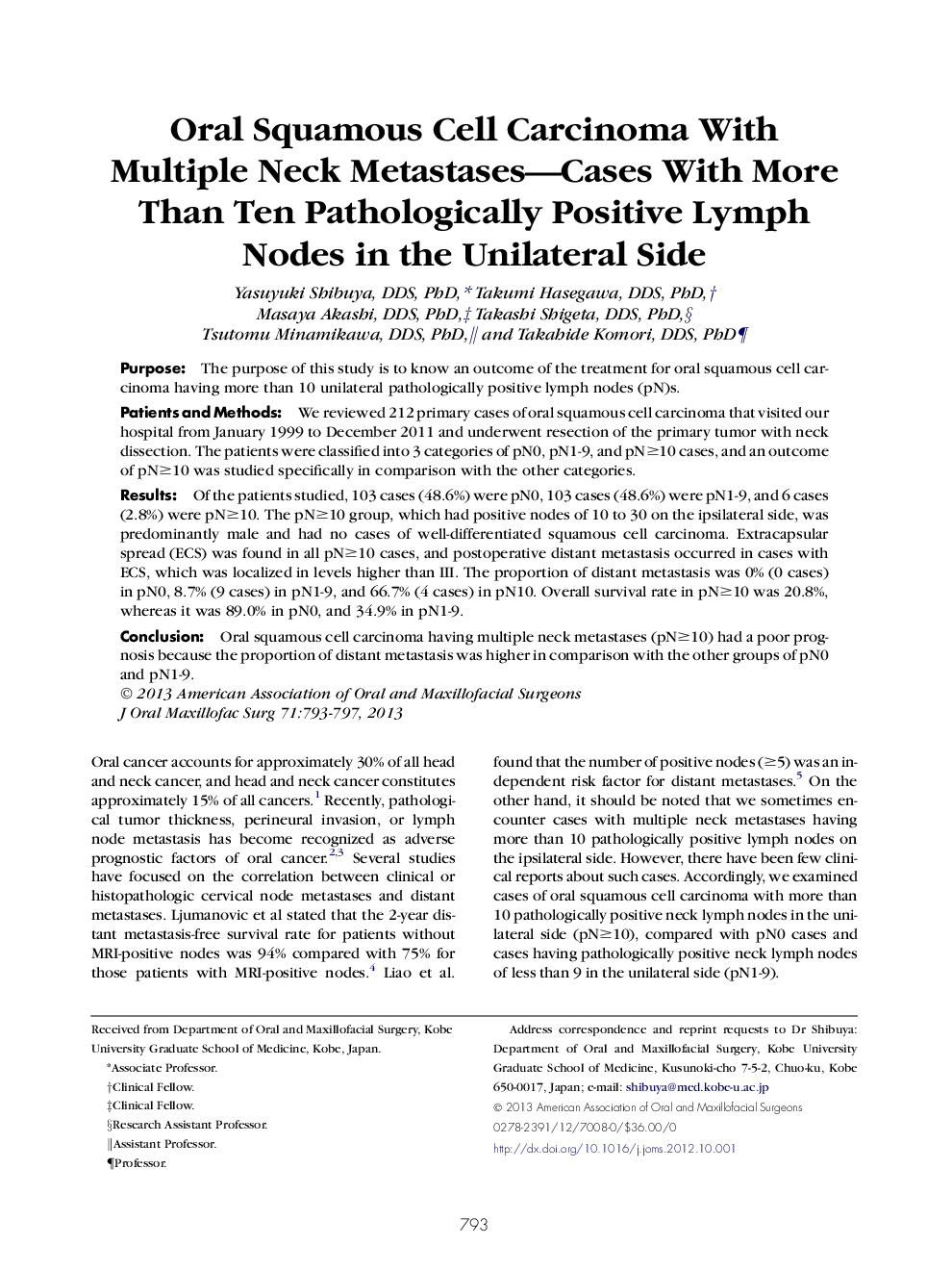| Article ID | Journal | Published Year | Pages | File Type |
|---|---|---|---|---|
| 3156584 | Journal of Oral and Maxillofacial Surgery | 2013 | 5 Pages |
PurposeThe purpose of this study is to know an outcome of the treatment for oral squamous cell carcinoma having more than 10 unilateral pathologically positive lymph nodes (pN)s.Patients and MethodsWe reviewed 212 primary cases of oral squamous cell carcinoma that visited our hospital from January 1999 to December 2011 and underwent resection of the primary tumor with neck dissection. The patients were classified into 3 categories of pN0, pN1-9, and pN≥10 cases, and an outcome of pN≥10 was studied specifically in comparison with the other categories.ResultsOf the patients studied, 103 cases (48.6%) were pN0, 103 cases (48.6%) were pN1-9, and 6 cases (2.8%) were pN≥10. The pN≥10 group, which had positive nodes of 10 to 30 on the ipsilateral side, was predominantly male and had no cases of well-differentiated squamous cell carcinoma. Extracapsular spread (ECS) was found in all pN≥10 cases, and postoperative distant metastasis occurred in cases with ECS, which was localized in levels higher than III. The proportion of distant metastasis was 0% (0 cases) in pN0, 8.7% (9 cases) in pN1-9, and 66.7% (4 cases) in pN10. Overall survival rate in pN≥10 was 20.8%, whereas it was 89.0% in pN0, and 34.9% in pN1-9.ConclusionOral squamous cell carcinoma having multiple neck metastases (pN≥10) had a poor prognosis because the proportion of distant metastasis was higher in comparison with the other groups of pN0 and pN1-9.
